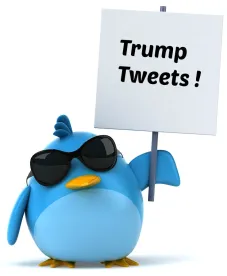Late on April 20, President Trump tweeted his intention to issue an Executive Order (EO) that “temporarily” suspends immigration into the United States. The proposed suspension may be issued in two EOs that address the following:
-
60-day travel ban EO: The first EO may consist of a 60-day ban on the issuance of immigrant visas, with carveouts for immigrant visas for immediate family members of U.S. citizens. This 60-day travel ban EO may not address the issuance of non-immigrant visas, including temporary employment visas
-
Non-immigrant visa EO: The second EO may address the issuance of non-immigrant visas. The specific duration of this travel ban is not yet known, but it may be in effect for a 90-day period.
The EOs could follow the same framework as the previous travel bans issued by President Trump, including iterations of the 2017 travel ban, and the recent travel bans concerning countries that are hit hardest by Coronavirus Disease 2019 (COVID-19), such as China and the Schengen area countries. The proposed EOs could run for an initial validity period — potentially 60 to 90 days — and may bar the admission of all foreign nationals seeking entry into the United States, while providing certain exceptions to lawful permanent residents (green card holders), and immediate family members of U.S. citizens who also possess immigrant visas.
President Trump’s authority to issue an immigration travel ban is outlined in Section 212(f) of the Immigration and Nationality Act, which states that “whenever the President finds that the entry of any aliens or of any class of aliens into the United States would be detrimental to the interests of the United States, he may by proclamation, and for such period as he deems necessary, suspend the entry of all aliens or any class of aliens as immigrants or nonimmigrants, or impose on the entry of aliens any restrictions he may deem to be appropriate.”
Though the president does not have absolute authority to ban all foreign national travelers into the United States for any reason, the United States Supreme Court has recognized the president’s authority to suspend immigration into the United States for a class of aliens, or all aliens for that matter, if the president finds that their entry into the United States would be detrimental to the United States. While little is known about the substance and scope of the proposed EOs that President Trump will issue, or when the EOs will be issued, his authority to issue the travel ban may be upheld on grounds of public health and protection of the U.S. economy and American workforce from rising unemployment.
The following questions are outstanding at this time:
- How long will the EOs remain in effect, once signed? Based on prior travel bans, the proposed EOs could have an initial effective period of 60 to 90 days.
-
Who will be affected by the proposed EOs? The proposed EOs may match previous travel ban EOs; U.S. citizens and lawful permanent residents (green card holders) may be exempted from the proposed EOs and allowed to enter the United States. However, the proposed EOs could impose a broader travel restriction for foreign nationals who hold temporary non-immigrant visas, such as B-1, H-1B, or L-1 visas, and foreign nationals who hold immigrant visas. Foreign nationals outside the United States may be required to remain abroad until the travel ban expires or is lifted.
-
Will the proposed EOs affect foreign nationals who are already physically in the United States on non-immigrant visas? With President Trump’s previous travel ban EOs, foreign nationals who were already in the United States at the time the travel bans were issued were not required to leave the United States or cease working, if they were on a temporary employment visa. The proposed EOs may follow this same framework by allowing foreign nationals in the United States to remain, and importantly, continue working if on a temporary employment visa. There is some speculation that H-1B dependent employers will need to re-certify that this H-1B worker will not displace a U.S. worker.
-
Will the proposed EOs affect immigration filings pending with the U.S. Department of Labor (PERM/labor certifications) or the U.S. Citizenship and Immigration Services (USCIS)? At this time, no guidance is available as to whether the DOL or USCIS will continue processing pending cases. The DOL and USCIS may increase audits or requests for evidence concerning those applications that involve green card sponsorship as a measure to protect the U.S. economy and the American workforce.
-
Will the EOs affect foreign-national students applying for F-1 student visas? The EOs may have an impact on foreign nationals applying for F-1 student visas. Specifically, foreign-national students applying for F-1 student visas to enter the United States to attend university may experience delays to secure an F-1 visa appointment at U.S. Embassies and Consulates due to appointment backlogs created by COVID-19. Universities in the United States may decide to implement remote study options or delay the start of the Fall 2020 semester until later in the academic year.
President Trump may issue and sign the proposed EOs this week. Companies may consider continuing to prepare and file temporary employment visa extension cases with USCIS. Both the DOL and USCIS have indicated over the last several weeks that their offices will remain open and process cases as normal despite COVID-19.
U.S. Embassies and Consulates may remain closed or suspend visa appointments for a temporary period — potentially an initial period of 60 to 90 days — once the proposed EOs are issued and signed by President Trump.



 />i
/>i
